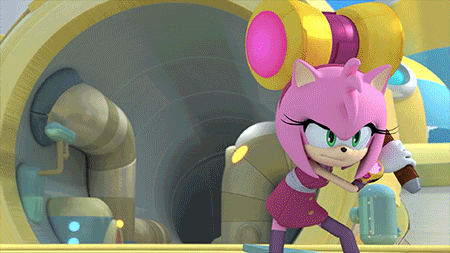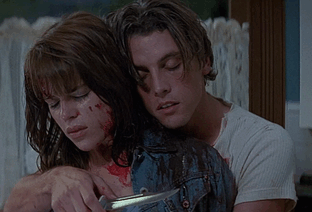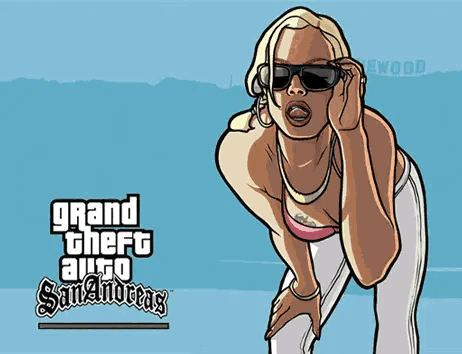This blog is a research project that explores the violent depictions of women in mass media and their real-life effects and implications.
Don't wanna be here? Send us removal request.
Text
Anti-Violent Media: My Masculinity Helps (2013)

Image Credit: https://www.imdb.com/title/tt3470310/
0 notes
Text
The Film Industry: Pornography
Pornographic film consumption and real-life aggression towards women by men has been studied and documented for years. This study conducted by Kraus, Tokunaga, and Wright points to this sentiment by analyzing existing literature on this issue and connecting it with other scholarship available. There were ten research questions that served as criteria for their analysis, and the categorical descriptions of the pornographic material included violent, nonviolent, and general. From the 22 studies ranging from 1994 to 2014, the researchers statistically determined from a total number of 20,820 participants the general amounts of people that were exposed to pornographic material in which women faced situations such as not giving consent and experiencing some kind of force or being drunk or on drugs. Additional statistical testing found an “increased likelihood of committing actual acts of sexual aggression.”
Pointing out this issue does not demonize those who engage with this form of media, but rather brings attention to an obvious discrepancy that is linked to real-life consequences for innocent women and victims of violence. As stated on page 201 of the article, “many pornography consumers are not sexually aggressive.” The point is that for those that are sexually aggressive towards women or hold attitudes condoning/encouraging such, they are more likely to be consumers of pornographic material, which calls into question the types of pornography and actions being taken towards women in such media at such a general scale. Ultimately, there is still more research to be done and more equitable conditions for sex workers to be pushed for.
Source
Kraus, A., Tokunaga, R. S., & Wright, P. J. (2016). A Meta-Analysis of Pornography Consumption and Actual Acts of Sexual Aggression in General Population Studies. Journal of Communication., 66(1). https://doi.org/10.1111/jcom.12201
0 notes
Text
Positive Video Game Examples: The Universes of Mario and Sonic




These are examples of games that display at least neutral, if not positive, portrayals of female characters, especially in their interactions with male characters. Princess Peach and Amy are two well-known female characters from the Mario and Sonic video games, respectively.
0 notes
Text
Marginalized Groups: Trans Women (of Color)
Trans women are often left out of conversations regarding the effects of media representation and real-world manifestations of them. A two-part study published in 2017 included, in the first study, a total sample of 274 cisgender men and women participants who each watched two of six film and television clips that depicted trans women in various lights (Kurtz-Costes & Solomon). Two positive, negative, and control (neutral) clips constituted the six TV/film clips, with the two positive clips coming from 2003 episode "Where the Boys Are" of Gray's Anatomy and the other from 2015 episode "Death Doesn't Let You Say Goodbye" of Sense8. The two negative clips came from a 2012 episode "Strip Maul" of CSI: Crime Scene Investigation and 2012 episode "Orca Shrugged" of Sons of Anarchy (pictured below). Finally, the two control clips came from a 2009 episode of CSI: Crime Scene Investigation and a 2003 episode of Grey's Anatomy.

Image: (Stahler 2014)
After watching the clips, the participants were asked a series of questions and responded with their agreement "on a 7-point scale ranging from 'not at all' to 'very much so.'" The researchers found a statistical correlation between participants watching clips that portrayed trans women in positive lights and having more empathetic/positive attitudes towards them by cisgender people. Research such as this is important because it provides a facts-based approach to a topic that is said to cause social tension and controversy, which also were points considered in the study.
As mentioned in the article, the trans community does not constitute enough of the general population in a way that increases the likelihood of daily interactions with cisgender people. Therefore, the depictions of trans people on TV shows and in movies serve as the primary glimpses into the ideals and personalities of trans people, which can be, and often is, harmful. Typical depictions include psychotic and violent trans women and sex workers that are often victims of violent sex-related crimes and/or murder, such as in the TV show Law & Order: Special Victims Unit, with the episode "Fallacy" highlighted in the article. These are the only images of trans women that the general public sees, and considering how cisgender women are already treated when victims of physical or sexual assault, there are no surprises when learning of even less sympathy about physical and sexual violence towards trans women. The personal effects of violence against women, especially in trans women, include self blame, depression, and suicidal thoughts, which proves the point that there exists a lot of room in media for change that translates into a more inclusive and safe environment for all women (Hawkey et al. 2021).
Sources
Hawkey, A. J., Ussher, J. M, Liamputtong, P., Marjadi, B., Sekar, J. A., Perz, J., Ryan, S., Schmied, V., Brook, E., & Dune, T. (2021). Trans Women’s Responses to Sexual Violence: Vigilance, Resilience, and Need for Support. Archives of Sexual Behavior, 50(7), 3201–3222. https://doi.org/10.1007/s10508-021-01965-2
Kurtz-Costes, B. & Solomon, H. E. (2017). Media’s Influence on Perceptions of Trans Women. Sexuality Research and Social Policy, 15(1), 34–47. https://doi.org/10.1007/s13178-017-0280-2
Stahler, K. (2014, October 1). 'SOA' treated Walton Goggins' transgender character well, but the show could have done better. Bustle. Retrieved April 29, 2022, from https://www.bustle.com/articles/42168-soa-treated-walton-goggins-transgender-character-well-but-the-show-could-have-done-better
0 notes
Text
The Film Industry: Slasher Films
Slasher films provide a genre notorious for depicting brutal death through, well…slashing. A study from 2020, though, provides insight into a few previously existing ideas about the impact of slasher films on the views of women’s sexuality and relation to brutality and violence. In a lot of slasher films, women are brutality murdered, with women’s sexuality centered as central to their deaths.
The study conducted by Wellman, Meitl, and Kinkade compiled a list of the top five most influential slasher films from the 1960s through the 2010s and analyzed the films and their presentations of the female characters in them. Some of the most popular films from the list include Scream (1996), I Know What You Did Last Summer (1997), Freddy v Jason (2003), Saw (2004), and Cabin in the Woods (2012).
In the study, there were a total of 252 female characters observed, with 156 of them dying in some way. 28.7% of the female characters who died were “pure,” compared to 71.3% of them being sexualized in at least one way. In terms of race, there were similar rates of death found between white and nonwhite female characters. The forms of sexualization used to measure such in this study include: dressing in a sexual manner, being portrayed with a flirtatious attitude, engaging in foreplay or sex, and/or being nude at some point in the film. According to the statistics of these findings, flaws and strength were not statistically significant factors in a female character’s death, but her display of and/or engagement in sexuality or sexual activities was. Out of female characters that were either heroes, killers, or victims, the victims were statistically more likely to die, be portrayed as weak while also sexual, and suffered the most brutality according to their t-tests.
Combined with the statistical data done from this study, the researchers' conclusions solidify a few points that may be difficult or saddening for many. Obviously, the connection between sexuality in women and brutal violence against them in slasher films is irrefutable. Women that are visually and internally provocative to men ending up brutally murdered repeatedly on such popular platforms sends the message that women must strictly watch their sexuality or they will face physical repercussions for them. Usually attractiveness in these films is limited to thinness and whiteness. Additionally, according to Wellman et al., there have been studies that found that “women who self-objectify are less likely to develop a healthy sexuality, less likely to use condoms, more likely to strive for unrealistic beauty standards and more likely to suffer from sexual health problems into adulthood (APA 2008; Schooler and Ward 2006; Ward 2002).” An example of such is the development of eating disorders and low self-esteem due to the perception of not fitting beauty standards. Research such as this study is so important because it combines facts with the media that we have been familiar with for literal decades. The pervasiveness of these themes from the 1960s to a decade that only ended two years ago proves that these claims cannot be taken lightly. It is hard for women to not internalize these themes if such themes are the only ones presented any time a woman is on a screen that potentially millions will see.
Source
Wellman, A., Meitl, M. B., & Kinkade, P. (2020). Lady and the Vamp: Roles, Sexualization, and Brutalization of Women in Slasher Films. Sexuality & Culture, 25(2), 660–679. https://doi.org/10.1007/s12119-020-09788-4
0 notes
Text
Moving Forward: What We Can Do Differently
We can use these same forms of media to change how women are depicted, interacted with, and seen by the audience. One way to do this is to quite literally do the opposite of what is being done now, which, unfortunately, may be easier said than done. We can continue to make efforts to allow men to see how wrong these depictions are of women and change how women are seen on screen. A powerful example of this is the movie My Masculinity Helps, released in 2013, by Marc Grimmett and David Hambridge. These two men use their social privileges as men and knowledge of rape culture to cultivate a space in which men and boys can join in conversations and actual actions that dismantle sexual violence against women. By connecting social violence with gender inequality; depicting Black men as models of prosocial behavior; increasing men’s empathy towards rape survivors; and teaching men how to support survivors, Grimmett and Hambridge have provided a visual tool that can be used in many different households and institutions to move our conversations and ideologies about women and sexual violence to a place that encourages women to come forward about their assaults/assailants and encourages people to listen to and feel for them (Chapleau 2015).
Another way in which this can be accomplished is by increasing diversity in the video game, television, and film industries, and we are increasingly seeing these same efforts being taken today. More women are being able to take important positions in game development and behind the cameras to provide a more equal and enjoyable experience for other women who consume mass media. There are more progressive video games, TV shows, and films being created today that gives hope to a future in which women are not constantly placed in positions of inferiority and hypersexuality while teaching men that such placement is not only normal but a goal to be strived for in maintaining their own masculinity and sexuality.
Source
Chapleau, K.. (2015). Using Masculinity to Stop Sexual Violence: Must Women Be Weak for Men to Be Strong?: My Masculinity Helps. By Marc A. Grimmett and David Hambridge, North Carolina Coalition Against Sexual Assault, 2013. 32 min. www.mymasculinityhelps.com/about/about-the-film. Sex Roles, 73(1-2), 86–89. https://doi.org/10.1007/s11199-015-0498-5
0 notes
Text
Video Games: The VVAWS and Impact of Inappropriate Exposure
Some of the most popular video games of today include themes that can lead to their players developing attitudes excusing violence against women or even encouraging it. One of the primary studies I have found and focused on is that of Borgman, Goodnight, and Swartout who created the Virtual Violence Against Women Scale (VVAWS) in 2020. This study utilizes statistical methods such as principal components analysis with Varimax rotation and item response (IRT) models to conclude that there is a correlation between exposure of men to violent themes against women and attitudes that excuse such violence, as well as the fact that the Entertainment Software Rating Board (ESRB) can expand their warnings to push toward creating better age-appropriate content for their consumers. The total study was broken into two studies and received surveys from a total of 275 participants around the age of 30 years old. The researchers utilized three validated scales of violence perpetration (the Abusive Behavior Inventory, Physical Abuse of Partner Scale, and Revised Conflict Tactic Scale) and the 32 best-selling rated M games from 2010 for the PlayStations 3 and 4, Xbox, Xbox 360, Xbox One, and Windows systems. Using a self-report strategy, the participants answered whether they witnessed certain actions happen to women. The most common forms of violence included female characters being beat up or hit with something, grabbed, shot, stolen from, and threatened. Some other rather gruesome actions seen included female characters being shot, cut, poisoned, burned, or drowned. Although the study could not directly conclude that seeing violence happen to women in video games leads to men being violent or excusing of violence to women in real life, it ultimately points to the pervasiveness of violence against women in video games and reminds us to create alternatives. Because both men and women (with women being the majority of the participants making up the samples studied) were involved in this study, it is important to note that the portrayal of women as subjects only capable of violence happening to them in a setting with no real-life consequence can be dangerous as a recurring theme for anyone to see. For men, it can lower their empathy for, and perception of, women as people; for women, it can diminish self esteem and their own perceptions of their places and capabilities in society.
Source Brown, B. P., Collins, M. A., & Dill, K.E. (2008). Effects of exposure to sex-stereotyped video game characters on tolerance of sexual harassment. Journal of Experimental Social Psychology, 44(5), 1402–1408. https://doi.org/10.1016/j.jesp.2008.06.002
0 notes
Text
Media: What It Is and Why It Is Important
Media is the plural form of the word “medium,” which is defined by Merriam-Webster Dictionary in a few ways:
“a channel or system of communication, information, or entertainment”
“a publication or broadcast that carries advertising”
“a mode of artistic expression or communication”
“digital audio or video files available for playback or streaming”
We know, then, that media is intentional. I am primarily focusing on video games, television, and film, because all three are perfect embodiments of what media is, although other forms such as social and print media are also valid. Mass media is meant to be seen and shared by many, so correcting the current violence towards women is imperative.
0 notes
Text
Introduction: Violence Against Women in Media (VAWM)
Hello! Welcome to the Violence Against Women in Media (VAWM) blog! This is a Mercer University JMS 310 research project dedicated to analyzing various forms of media and their connections with violence against women and also highlighting positive modes of change! This blog will primarily use mini essays and visuals to answer the following research questions:
What are the most dominant depictions of women on media platforms, specifically in video games and TV/film, and what are the causes?
How do these images affect the perceptions of women by society and by women themselves?
How do these images incite violence against women and what kinds of violence do women experience?
How different are the experiences of marginalized women with these forms of media?
What can be done to create more anti-violent media and improve women’s images in the media and subsequently our society?
1 note
·
View note

